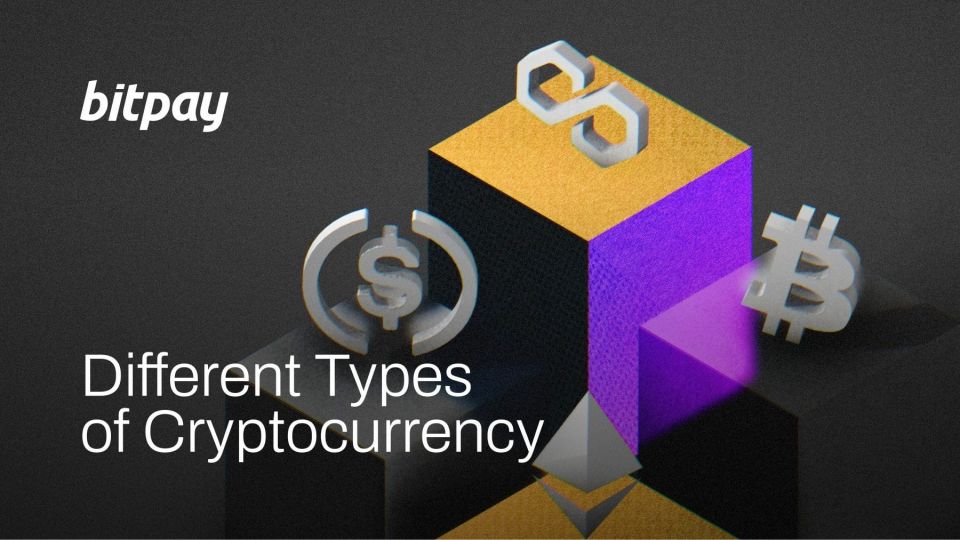– Cryptocurrency encompasses a diverse ecosystem beyond Bitcoin and Ether, including thousands of digital currencies like altcoins, stablecoins, utility tokens, security tokens, DeFi tokens, and NFTs, each with unique purposes and underlying technologies.
– From Bitcoin’s inception as the first decentralized digital currency to the emergence of altcoins and stablecoins, the crypto landscape has expanded to offer a wide range of functionalities, including transaction speed improvements, price stability, and access to decentralized finance.
– The crypto universe continues to grow with innovations such as DeFi tokens offering decentralized financial services, and NFTs providing verifiable ownership of unique digital assets, reflecting the vast and evolving nature of cryptocurrency beyond mere investment vehicles.

Cryptocurrency has sparked a global financial revolution, creating entirely new ways to shop, save and spend. Depending where you are in your crypto journey, you may have never delved much deeper than Bitcoin or Ethereum. But there’s a wide universe of cryptocurrencies out there beyond the most popular coins. Having so much to explore can feel intimidating, so let this post serve as your guided tour through the crypto landscape. Grab your safari hat, and read on for a detailed overview of the different types of cryptocurrency, their unique features and purposes and the innovative blockchain technology that underpins them.
What are the different types of cryptocurrencies?
It’s estimated that around 10,000 different cryptocurrencies exist today, though most are obscure or niche coins with small communities and limited value. If 10,000 doesn’t seem like that many, consider that back in 2009 there was exactly one cryptocurrency: Bitcoin.
Virtually every day new cryptocurrencies are created, while others fade into obscurity. Over the last 15 years, significant breakthroughs in blockchain technology have led to the creation of a variety of different categories of cryptocurrency. Let’s take a look at some of them.
Bitcoin (BTC)
If you’ve heard of cryptocurrency, chances are you’ve heard of Bitcoin, which introduced the world to digital money. Launched in 2009 by a pseudonymous creator called Satoshi Nakamoto, Bitcoin was designed as a decentralized, peer-to-peer network for sending money around the world outside traditional banking system guardrails. It was the first cryptocurrency to garner widespread acceptance, and remains by far the most valuable cryptocurrency in the market. Considered by many as a form of “digital gold”, Bitcoin is popular as both an investment and a store of value. It’s accepted as a form of payment by many merchants and service providers worldwide.
Altcoins
A portmanteau of “alternative” and “coin”, any cryptocurrency other than Bitcoin (and some say Ether as well) is technically considered an altcoin. Altcoins first came on the scene in 2011 with Namecoin and the far more popular Litecoin, which later became known as “digital silver” to Bitcoin’s gold. Both sought to improve upon certain aspects of Bitcoin, which to that point was still the only crypto in existence. The earliest altcoins were directly based on Bitcoin’s underlying technology, and designed to fulfill a similar purpose as decentralized peer-to-peer payments networks. However each came about to address a perceived shortcoming of the market leader, from slow transaction times to a lack of privacy. Some of the best known altcoins today include Litecoin (LTC) and XRP (XRP)..
Stablecoins
Unlike many cryptocurrencies whose prices can rapidly fluctuate, stablecoins are specifically designed to maintain a constant value, typically 1:1 with the US dollar. Stablecoin issuers achieve this by holding a reserve of physical assets (dollars, gold, etc.) equivalent to the amount in circulation. These reserves are routinely audited, with the results made public for transparency purposes. Stablecoins make a great entry point into the world of cryptocurrency. Their steady value offers peace of mind, and they allow you to inexpensively explore further reaches of the cryptocurrency ecosystem through swapping. Stablecoins are extremely popular, claiming two spots on the 10 most valuable cryptocurrencies by market cap list as of March 2024 with Tether (USDT) and USD Coin (USDC).
Utility tokens
Utility tokens perform specific functions within the blockchain of their respective ecosystems, granting holders access to certain features or functions, such as earning crypto rewards. Utility tokens also play a vital role in supporting blockchain networks by providing compensation for processing transactions or other network services. Utility tokens are also used as a means of exchange for goods and services within their communities. Some of the better-known utility tokens include Funfair (FUN) and Basic Attention Token (BAT).
Security tokens
Sometimes called equity tokens, security tokens serve as a digital certificate of ownership of an asset, or a portion of an asset, on the blockchain. Any real-world asset can be “tokenized” via the blockchain, with the resulting tokens conferring ownership among the holders. Security tokens are the cryptocurrency world’s equivalent to trading stocks, where a portion of an asset (a company) is divided up into slices (shares) and made available to purchase by investors. Also similar to stock trading, security tokens must be registered by the Securities and Exchange Commission.
DeFi tokens
One of the most popular innovations of crypto and blockchain technology is decentralized finance, or DeFi. DeFi offers users a complete range of financial services, from loans to lending to insurance, all governed by automated smart contracts. This means no involvement required from legacy institutional providers, even for high-value transactions where participants don’t know each other. Most DeFi protocols issue their own cryptocurrencies, generally known as DeFi tokens, which provide holders access to these services on their network. Some examples of DeFi tokens include DAI, UNI and LINK.
Non-fungible tokens (NFTs)
You probably remember NFT mania from 2021 when CryptoPunks and Bored Apes were all the rage on social media. But the underlying technology behind non-fungible tokens has many valid use cases. By “minting” an NFT, a digital file is imbued with a unique fingerprint (hash), a token name and a symbol. This newly created, one-of-a-kind asset can then be stored on the blockchain, traded or sold at the owner’s discretion. The true and rightful owner will always be determinable by the permanent record on the blockchain. Unlike other cryptocurrencies, NFTs are “non-fungible”, meaning they can’t be exchanged 1 for 1.
Wrap up on the different types of cryptocurrencies
While from an outsiders view, cryptocurrency may appear to be a monolith, the world of crypto is made up of thousands of assets with their own innerworkings, functions, and communities. . It’s a sprawling multiverse of projects, services, tools, communities and investment opportunities. But there’s no right or wrong way to start exploring crypto. Hopefully now that you’re now armed with a better understanding of some of the different types of cryptocurrencies you’ll be confident to venture out beyond Bitcoin.
Go to Source
Author: The BitPay Team




